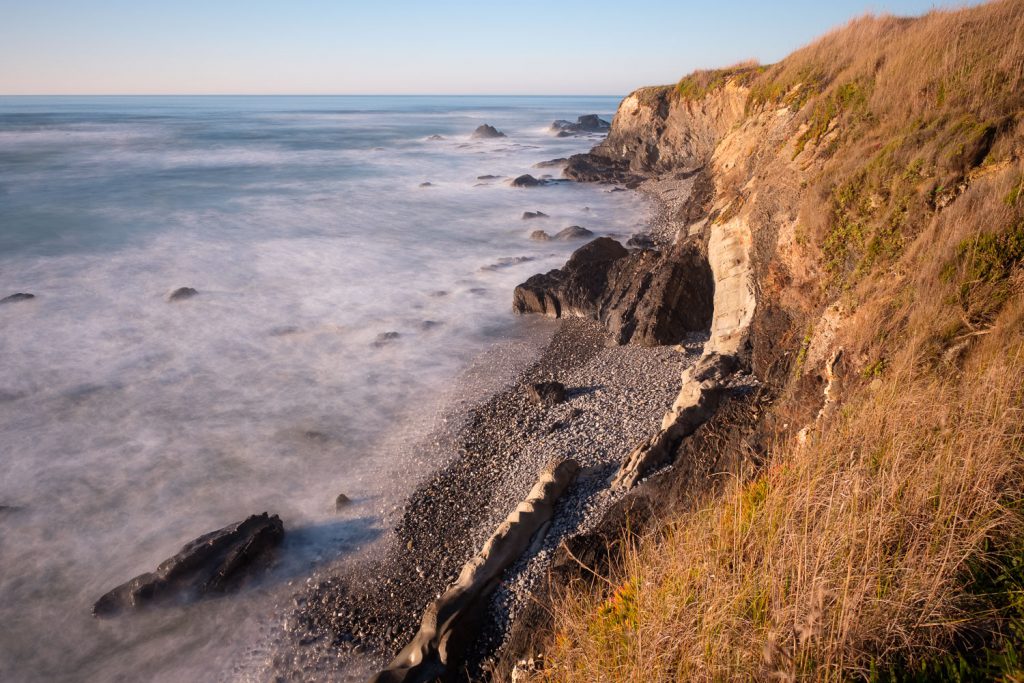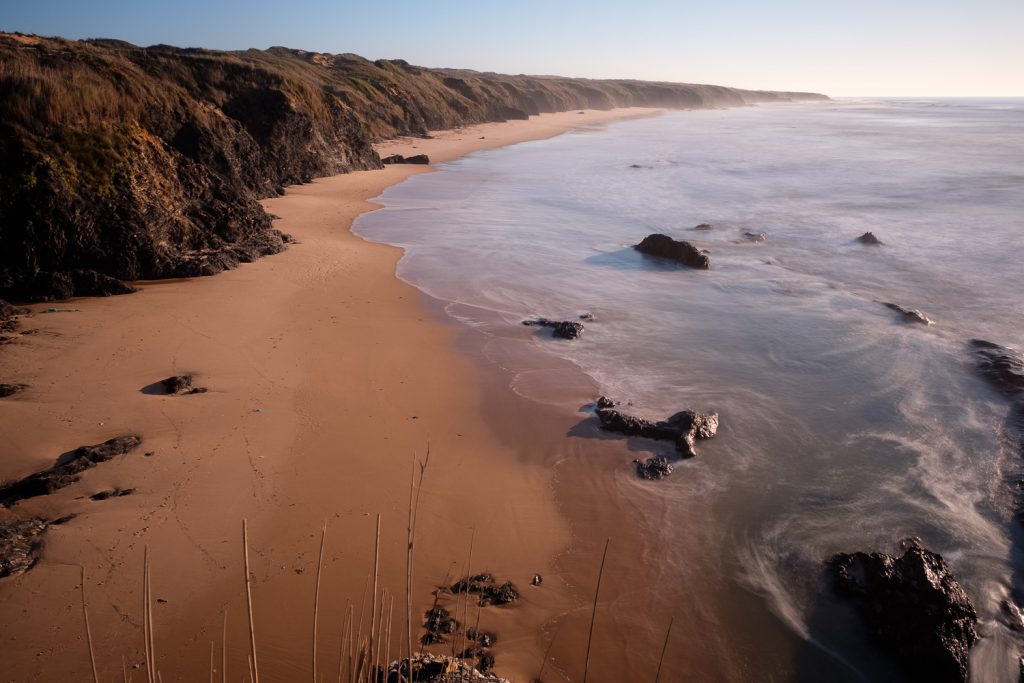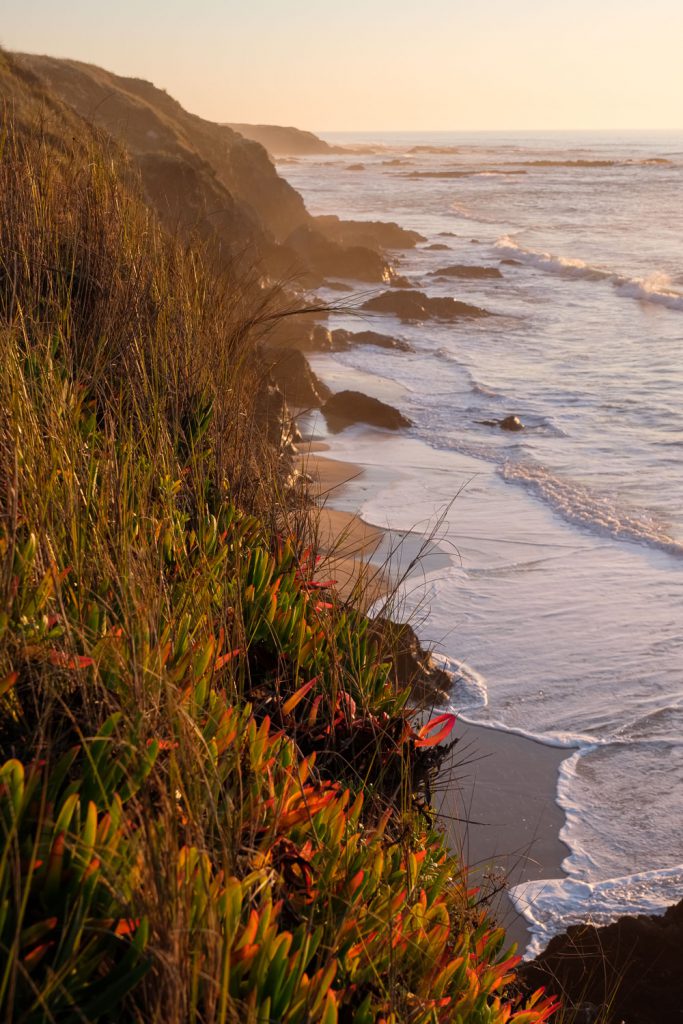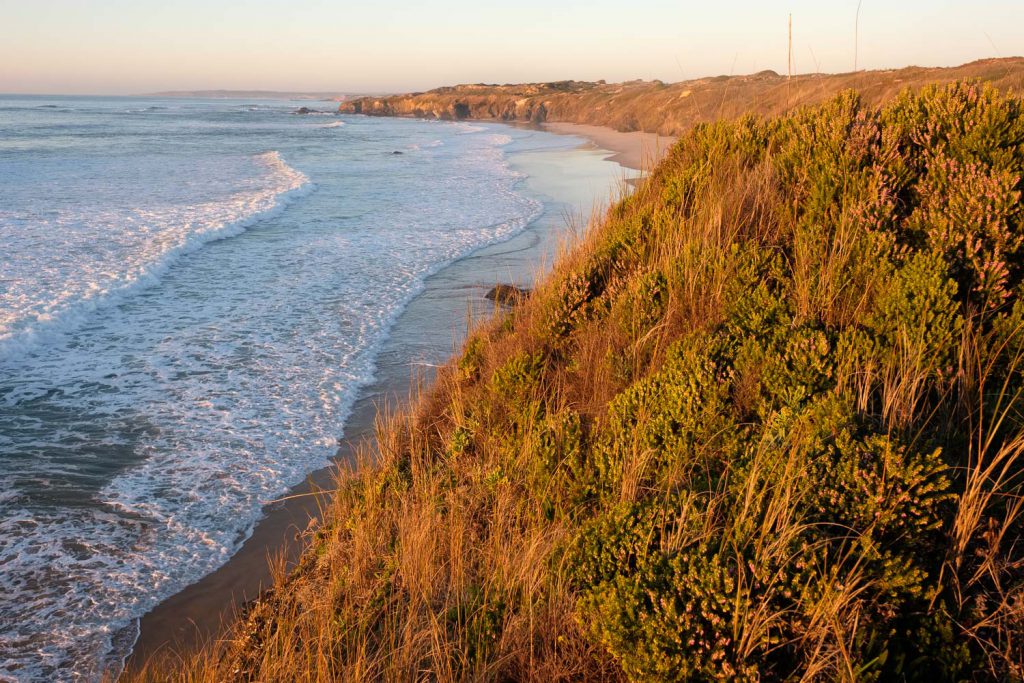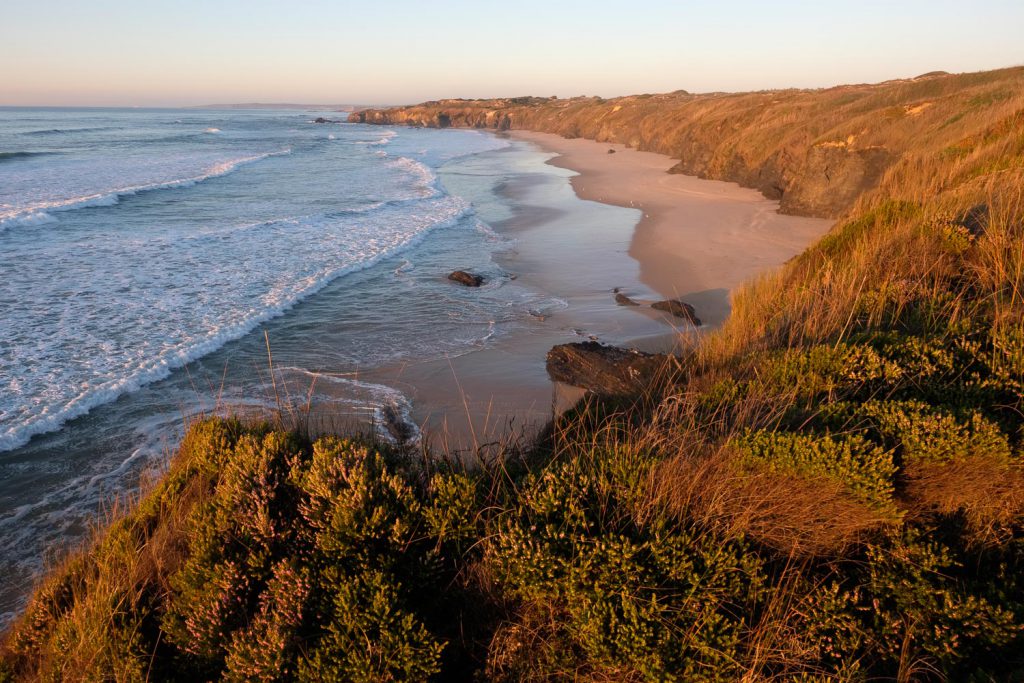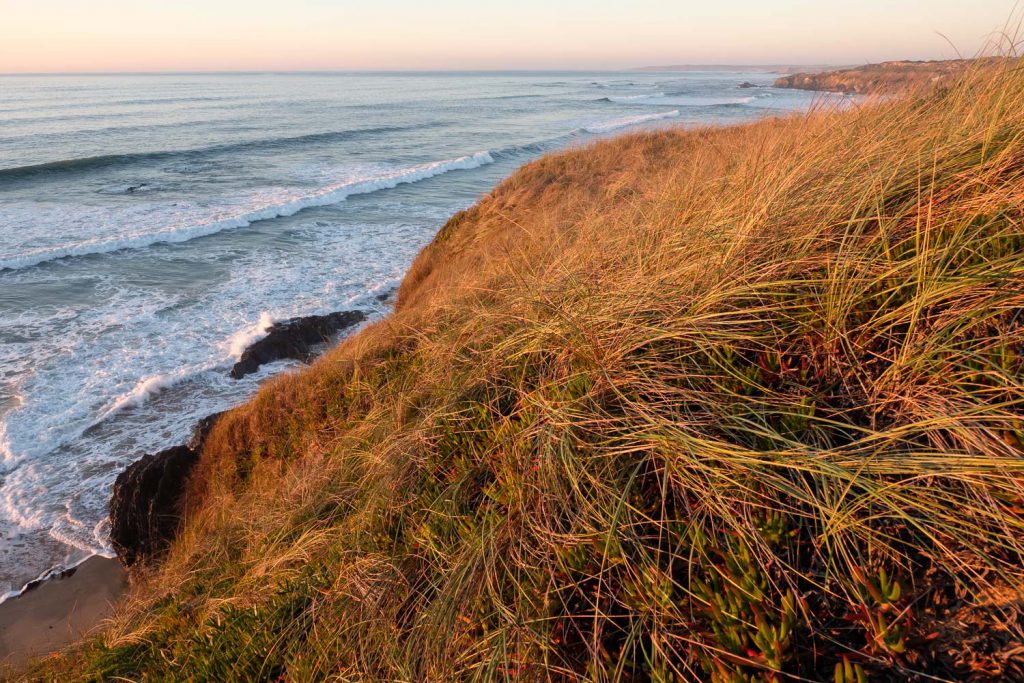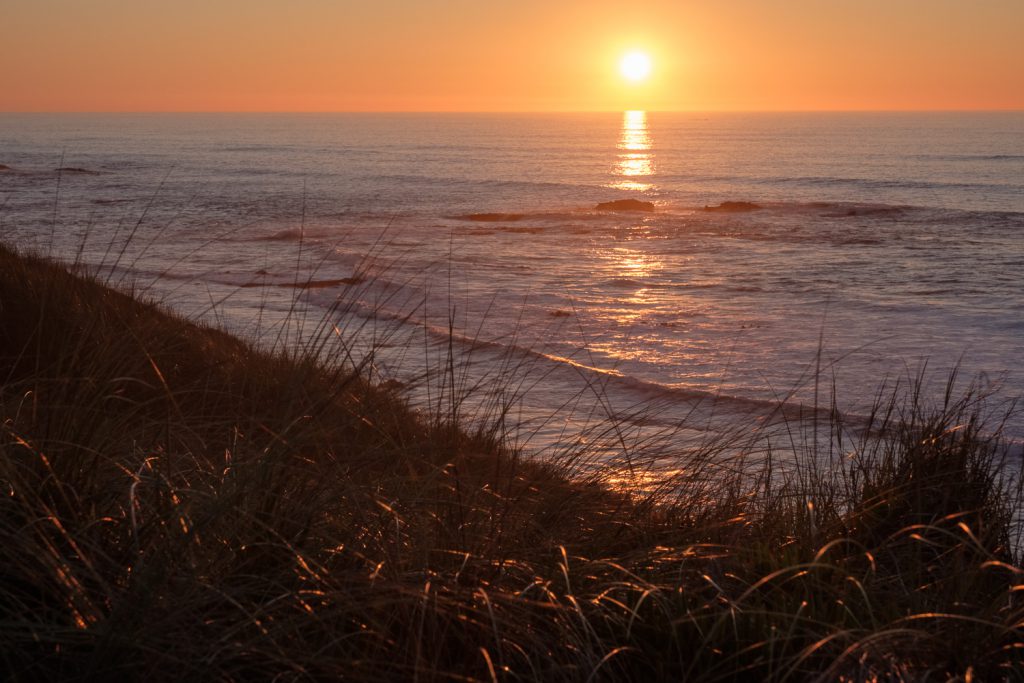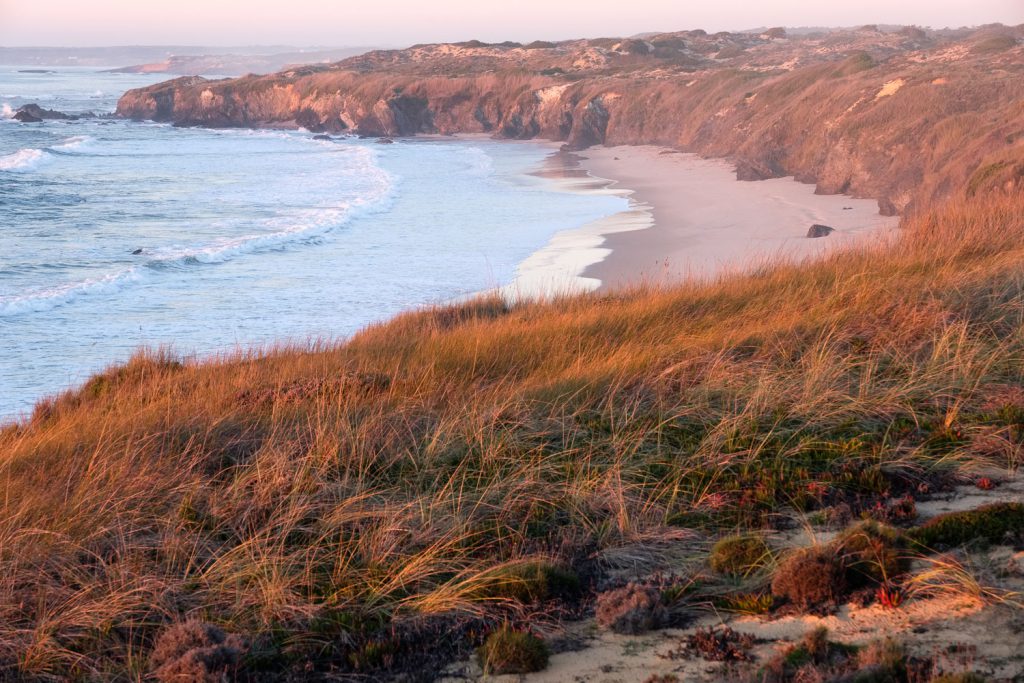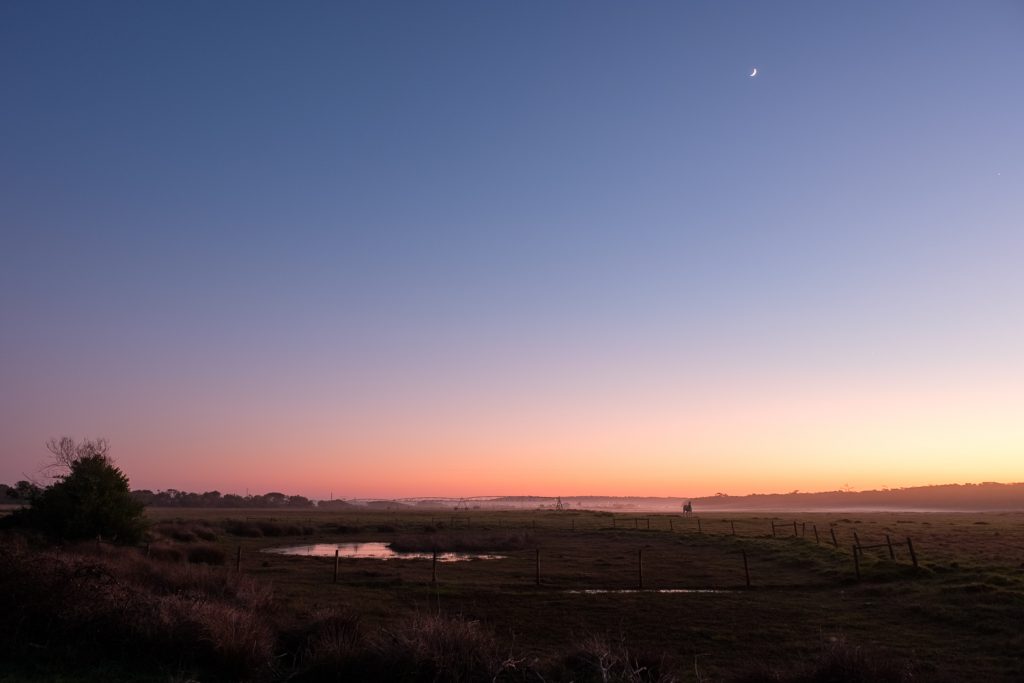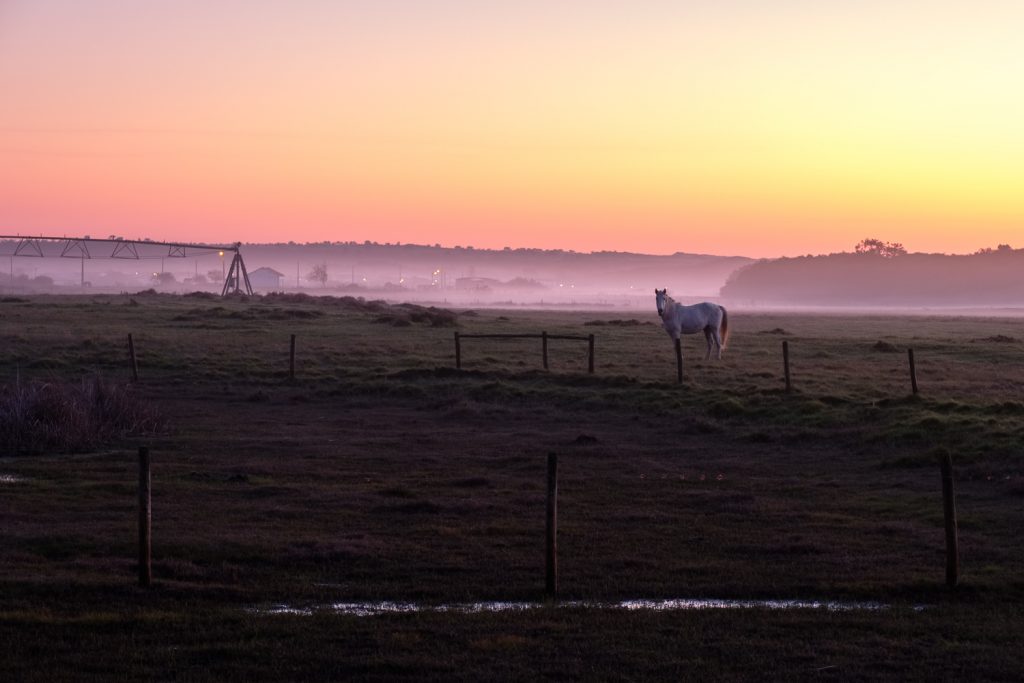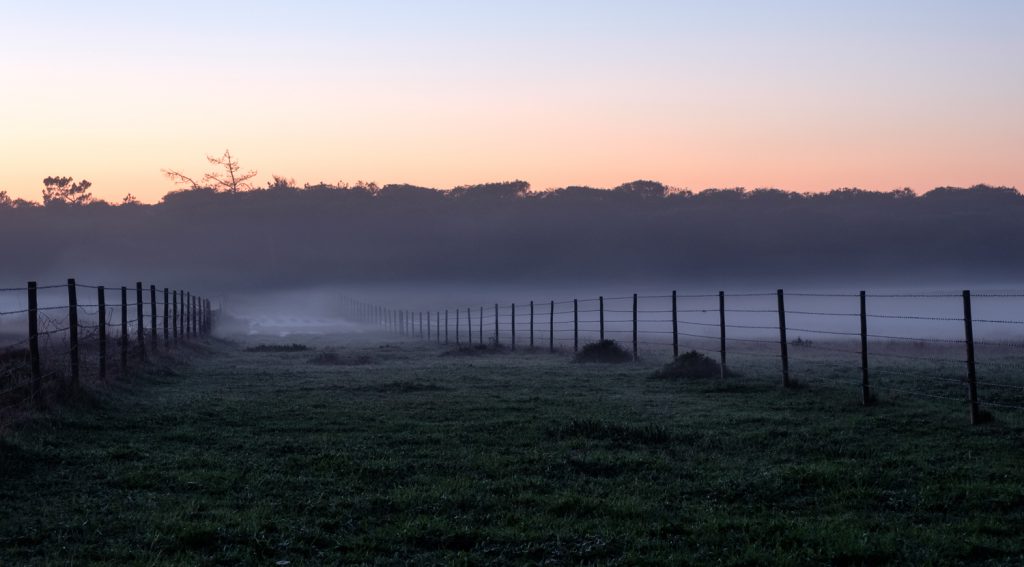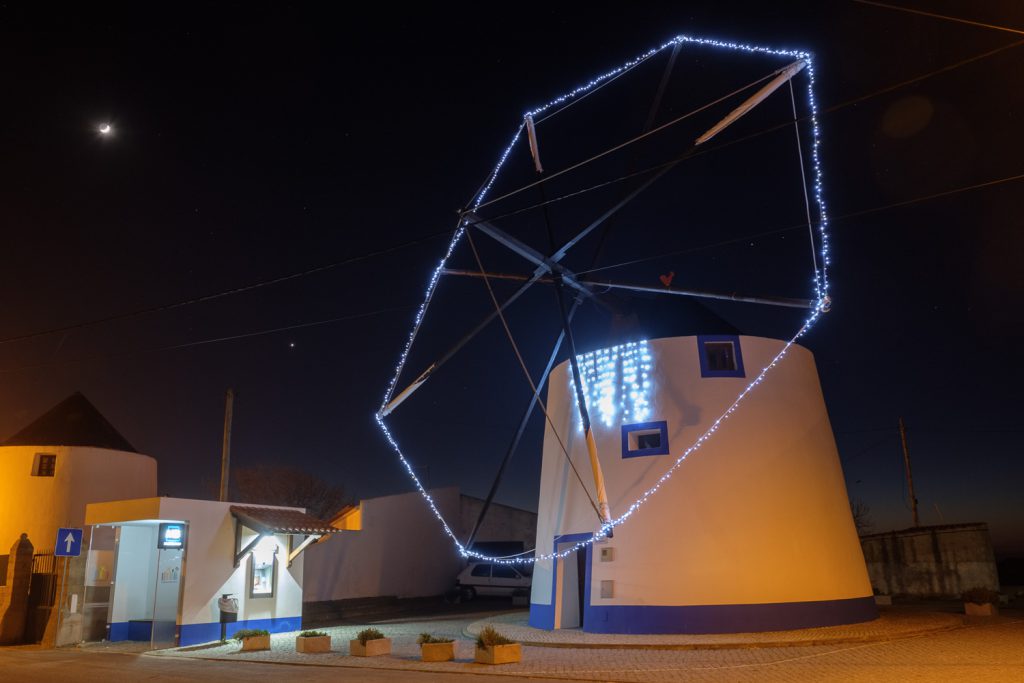It is nice to be able to visit the same location several times, be it within 1 year, or several years. In any case, there are many opportunities to record the seasonal effects in the landscape, together with the differences imparted by varying weather conditions. During Christmas and New Year, while taking several days off from work, I had the chance to (re)visit one of my favourite places – the beach of Brejo Largo, located only a few km North of the small village of Almograve.
It is possible to reach the beach by car, via a dirt road that starts a bit inland, in Longueira. However, since many years ago, my preferred way is to simply walk there, either from Longueira, or from Almograve. The first time I went to this beach was more than 30 years ago, with my brothers. Driven by “word of mouth” from some German tourists, we ventured from Longueira (our family Summer vacation spot) towards the coast, finding our way through rural paths, pastures with cows, and coastal sand dunes.
Today, the path has changed a bit, due to alterations in the land occupation, but it still retains the same characteristics as before. Some parts of it, especially near the coast, are signposted, as they belong to well established walking trails. You can actually make a nice circular trek of about 8 km, connecting Longueira, Brejo Largo, and Almograve. I never tire of walking in this area, appreciating the local tranquility and beauty. In this late December time, some of the fields still have unpicked sweet potato, but not many; no doubt they will be picked soon, as this is an important produce for the local economy. Other fields are used as pasture for cows and sheep, or planting corn.
In several isolated pine trees, it is possible to see nests with storks – gone are the days where these birds would migrate to Africa to spend the Winter time in fairer climates. There is even an unique species of stork that nests in the sea cliffs all year round. From Longueira to Brejo Largo the distance is around 4 km, an easy walk. After about 2 km you will pass the last group of houses, and the path will continue between a small pine tree forest. The terrain will also become sandy, as it enters the coastal sand dune system.
The sound of the sea and the waves is quite clear, brought by the wind. It is a sunny but cold December afternoon, with a clear and blue sky. I am thinking that such sky conditions will not be very interesting for photography, and will have to adjust accordingly: limit the sky area in the compositions, and make the best use of the side light. I am now hoping for some mellow light filtered by the sea spray, right at sunset time. We shall see.
Photographically speaking, I only took my Fujifilm XH-1 with the Fujinon 16-55 f/2.8 zoom lens, plus the tripod and Neutral Density filters for some long exposures. All in my small backpack, plus water and snacks. I have also packed another jacket, as I will be back only after nightfall, and I know the temperature will drop significantly by then. By now, after using this system for 1 year, I am so familiar with it, that it feels like second nature. Being weather resistant also helps to provide some degree of confidence when using it in the beach. There are lighter combinations in terms of camera and lens, but I really like this one: both camera and lens are robust, and perform really well. I am almost always in Aperture Priority mode, and low ISO, on the tripod.
When I arrived at the beach, the tide was rising, with the waves reaching almost to the bottom of the cliffs. Thus, I decided not to descend into the beach, and stayed at the top of the cliffs. Looking at the light conditions from the clear day, and with only about 1 hour until sunset, I had to work quickly. Being familiar with the area, and already with several framing ideas in my mind, i quickly entered into my shooting routine. I tested a few long exposures, and saw that the sea was giving nice results; in the northern part of the beach, there is a large geological dike intruding into the schist, which makes an interesting subject. This dike runs parallel to the coast, but unfortunately it was already covered by the incoming tide in the beach proper.
I made a few more shots looking south, and then quickly walked the rest of the way, to photograph the beach in the opposite direction. I was completely alone, with the exception of a couple of walkers that were doing the trail. In the summer, the place will be busier… Keeping an eye for the sunset, I noticed the light changing very quickly, becoming softer and more “golden”. I found interesting foregrounds along the cliff edges, including the typical low lying shrubs buffeted by the wind. It was an interesting colour combination composed of the dark rocks, the greens and goldens of the vegetation, and the hazy blues of the ocean and sky.
I remained on the beach until after sunset, and then slowly made my way back to Longueira. About half way through I saw a good possibility for a few more photos, as the Moon and Venus were already bright in the blue hour sky, and the fog was starting to cover the low lying parts of the landscape. There was a horse roaming about, which I managed to get into one of my photos. I arrived home well into night time, but it was well worth it. As a final bonus, the windmill in Longueira had its Christmas decorations on, so I took a photo of it, as a final frame for this session.
